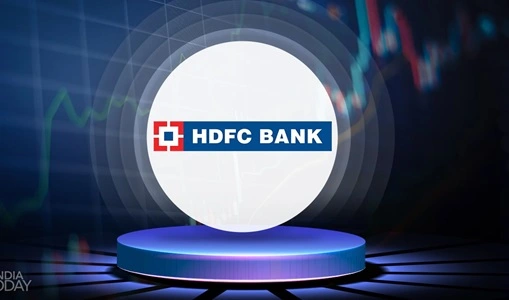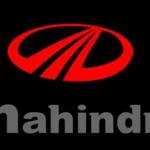HDFC Bank, India’s largest private sector bank by market capitalization and one of the most valued banks in Asia, stands as a benchmark for excellence, resilience, and innovation in the Indian financial ecosystem. With a reputation built on trust, technology, and customer-centric services, HDFC Bank has consistently outperformed peers and retained its place as a pillar of India’s banking sector.
In 2023, HDFC Ltd and HDFC Bank completed one of the largest mergers in Indian corporate history, creating a financial services powerhouse with a combined balance sheet of over ₹30 lakh crore. This strategic merger not only enhanced the bank’s scale but also positioned it uniquely to serve both retail and corporate segments with unmatched synergy in home loans, banking, and insurance.
As of mid-2025, HDFC Bank boasts:
- A market capitalization of over ₹14.5 lakh crore
- A network of over 9,200 branches across India
- Digital services adopted by more than 70 million users
- A strong presence in semi-urban and rural India, driving inclusive growth
In this detailed SWOT analysis, we explore the strengths, weaknesses, opportunities, and threats shaping HDFC Bank’s journey in a fast-evolving banking landscape.

Strengths: The Pillars Behind HDFC Bank’s Market Leadership
1. Strong Brand Equity and Customer Trust
HDFC Bank has established itself as one of the most trusted financial brands in India, synonymous with safety, service excellence, and transparency. Decades of prudent lending, low NPAs, and a robust balance sheet have earned it deep customer loyalty.
2. Extensive Pan-India Distribution and Digital Infrastructure
From metropolitan cities to rural towns, HDFC Bank has built a formidable omnichannel presence through its physical branches and highly rated digital platforms. Its mobile app, net banking services, and WhatsApp banking are industry benchmarks.
3. Post-Merger Advantage with HDFC Ltd
The 2023 merger gave the bank access to HDFC Ltd’s extensive home loan book and customer base, enabling cross-selling opportunities, increased CASA deposits, and more holistic financial services under one umbrella.
4. Strong Financial Performance and Asset Quality
With a net profit of over ₹60,000 crore in FY2024–25 and GNPA below 1.5%, HDFC Bank continues to be one of the most profitable and efficient banks in India. Its capital adequacy ratio remains above regulatory norms, ensuring strength in expansion.
5. Focus on Technology and Innovation
HDFC Bank is at the forefront of AI-driven banking, embedded finance, and digital onboarding. Its investment in fintech collaborations and its own innovation lab have positioned it as a tech-first bank that scales rapidly.
Weaknesses: Internal Challenges Hindering Potential
1. Overdependence on Retail Lending
While retail lending is a key strength, HDFC Bank’s loan book is skewed towards personal and consumer credit, making it more vulnerable during periods of economic slowdown or rising interest rates.
2. Merger Integration Complexities
The integration of systems, culture, and operations post the HDFC Ltd merger, while beneficial in the long run, poses short-term operational and cultural integration challenges, especially in harmonizing backend processes.
3. Limited Global Footprint
Despite its size, HDFC Bank has minimal presence outside India. Compared to global peers or even Indian banks like SBI, its international business contribution remains small.
4. Technology Outages and Customer Experience Gaps
In the past, HDFC Bank has faced penalties from RBI due to digital outages and system downtime. While major improvements have been made, customer expectations continue to rise, and flawless execution is now non-negotiable.
Opportunities: Catalysts for Future Growth
1. Financial Inclusion in Bharat (Rural and Semi-Urban India)
The next phase of banking growth lies in Tier II, Tier III cities, and rural India. With the merger, HDFC Bank is well-positioned to offer home loans, microcredit, and savings products to first-time borrowers in these markets.
2. Green Finance and ESG Lending
With sustainability gaining traction, the bank can expand into green bonds, ESG-compliant lending, and renewable energy project financing, aligning with both regulatory trends and investor sentiment.
3. Digital Banking and Embedded Finance
The rapid growth of UPI, Buy Now Pay Later (BNPL), and API-driven open banking ecosystems presents new business models. HDFC Bank’s strong tech infrastructure can enable customized financial services within e-commerce, travel, and health platforms.
4. Wealth Management and Insurance Synergies
Post-merger, cross-selling life insurance, general insurance, and mutual funds has become more seamless. India’s growing affluent and middle-class population offers significant scope for wealth advisory services.
5. Global Expansion in NRIs and Remittances
India is the top remittance-receiving country. HDFC Bank can increase its offerings for NRIs, international banking, and forex products, especially in the UAE, UK, and North America where large Indian diasporas reside.
Threats: External Risks to Monitor
1. Rising Competition from Fintechs and Neo-Banks
Agile fintech players like RazorpayX, Jupiter, Fi, and others are eroding market share in payments, credit, and deposits. HDFC Bank must continue to innovate or risk losing younger, tech-savvy customers.
2. Regulatory Tightening and RBI Oversight
With greater scrutiny on digital lending, capital requirements, and cybersecurity, regulatory compliance is becoming costlier and more complex, impacting agility.
3. Macroeconomic Uncertainty and Inflation
Global economic volatility, rising interest rates, or inflation can impact loan demand, increase default risks, and affect credit growth—especially in unsecured retail segments.
4. Cybersecurity and Data Privacy Risks
As banking moves fully digital, cyber threats are intensifying. Any breach can cause reputational and financial damage. Ongoing investment in cybersecurity is critical.
Conclusion: HDFC Bank – Resilient, Relevant, and Ready for the Future
HDFC Bank remains a beacon of strength, innovation, and inclusion in India’s financial ecosystem. With the successful completion of its landmark merger with HDFC Ltd, the bank has entered a new era—offering a 360-degree suite of banking and financial services under one roof.
In a world of disruption and transformation, HDFC Bank is not just adapting—it’s leading the change, one transaction, one innovation, and one customer at a time.

Meet Suhas Harshe, a financial advisor committed to assisting people and businesses in confidently understanding and managing the complexities of the financial world. Suhas has shared his knowledge on various topics like business, investment strategies, optimizing taxes, and promoting financial well-being through articles in InvestmentDose.com


